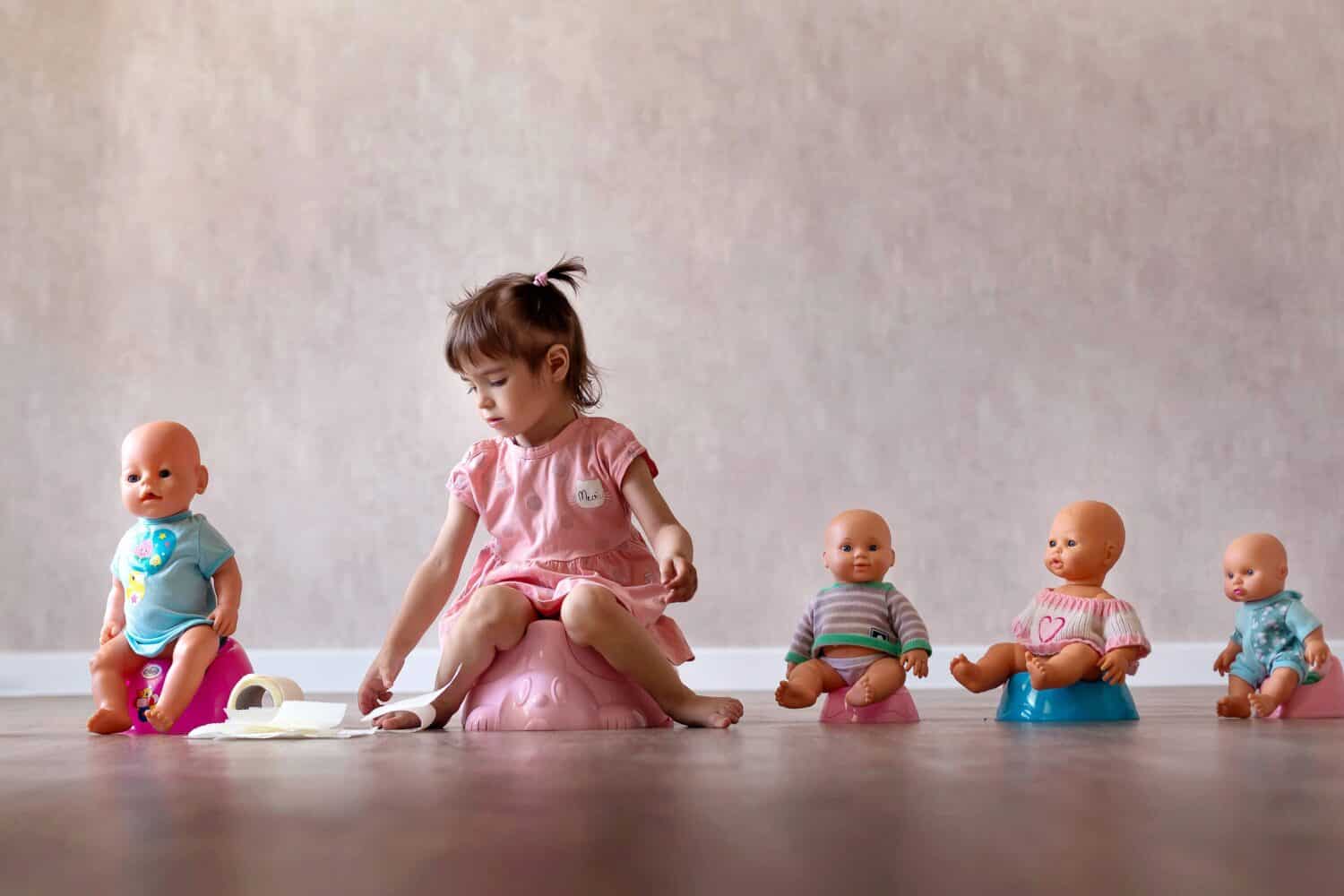One of the most stressful things that parents need to do with their children, is potty training. Questions like, “Should she still be having accidents?” “Is he too old not to be using the potty?” and “Am I doing something wrong?” constantly enter their minds. However, this doesn't have to be a stressful time! Potty training is not always a linear process, so enter it knowing that there will be moments of triumph and moments of regression. You can also rest assured that there is no set timeframe or standard that you or your child must meet. Each child is unique in their timelines and progress in the potty training world. In this article, we hope to give you the answer to all your questions as well as tips, tricks, and a free potty training chart so you can track your child's progress with this milestone.
Free Potty Training Chart
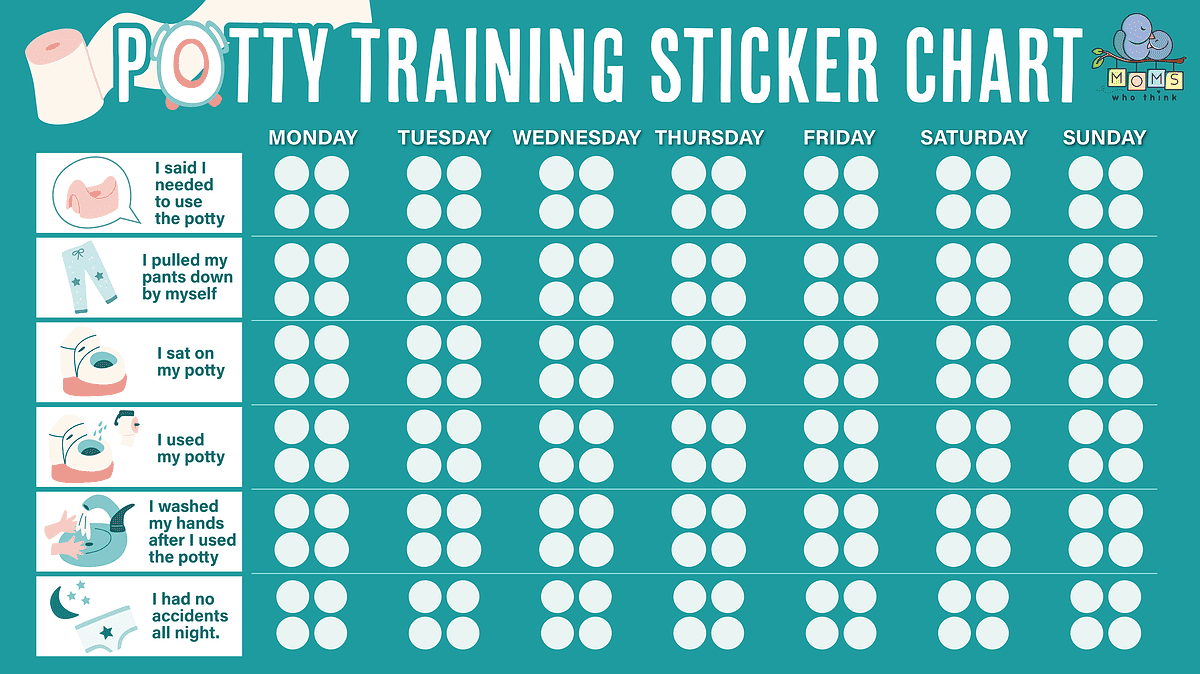
©MomsWhoThink / Alyssa Chavez
Benefits of Using a Potty Training Chart
- Boosts self-esteem: Having this chart as a sign of positive reinforcement when they do a desired task is a great way to increase your child's sense of self-esteem. With this boost in self-confidence, your child will want to use their potty and their potty training chart again and again.
- Tracks Progress: It is easy to get discouraged if you can't see how far you have progressed. Tracking your child's progress is beneficial for both you and your child. It allows your child to see every time they did something right and it allows you to track patterns in their behavior.
- Positive Reinforcement: Having this interactive chart positively highlights their accomplishments and helps them associate using the potty with those positive feelings. This will make them more likely to want to and enjoy using their potty.
When Should Your Child Be Potty Trained?
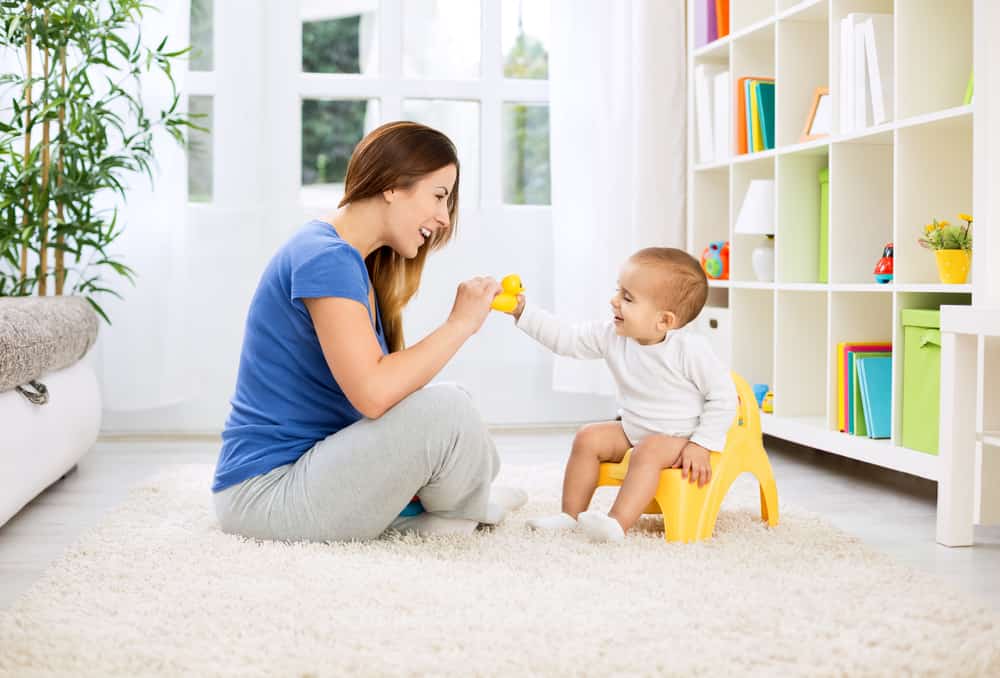
©didesign021/Shutterstock.com
As soon as they clean their first diaper, many parents begin to wonder when their child will be potty trained. While you may wish for it as soon as possible, this milestone does not happen at the same speed for every child. Additionally, your child may show signs of wanting to be potty trained, but may not succeed for some time. So the exact age of when your child should be potty trained varies from child to child. The Mayo Clinic discusses how potty training is dependent on physical, developmental, and behavioral milestones more than age.
Although exact timing does vary, the average child will be potty trained between 12 and 30 months of age. While there will be the occasional early birds or late bloomers, the average age range is between 1 and 2.5 years old. If your child does take longer to potty train, have no fear. Some kids take until their fourth birthday to be successfully potty trained. It is better to allow them to show interest on their own. If you try to start potty training too early, it may take longer to train your child successfully.
When Should I Be Concerned?
While late bloomers with potty training is completely normal, and not a cause for concern, here are some signs to look out for that could be indicative of a larger problem.
- Your child cannot tell when they need to use the restroom by four years old.
- They reach the age of three or three and a half and have no interest in using the toilet.
- Your child suddenly experiences a severe regression in their potty training progress.
Signs That Your Child Is Ready to Potty Train
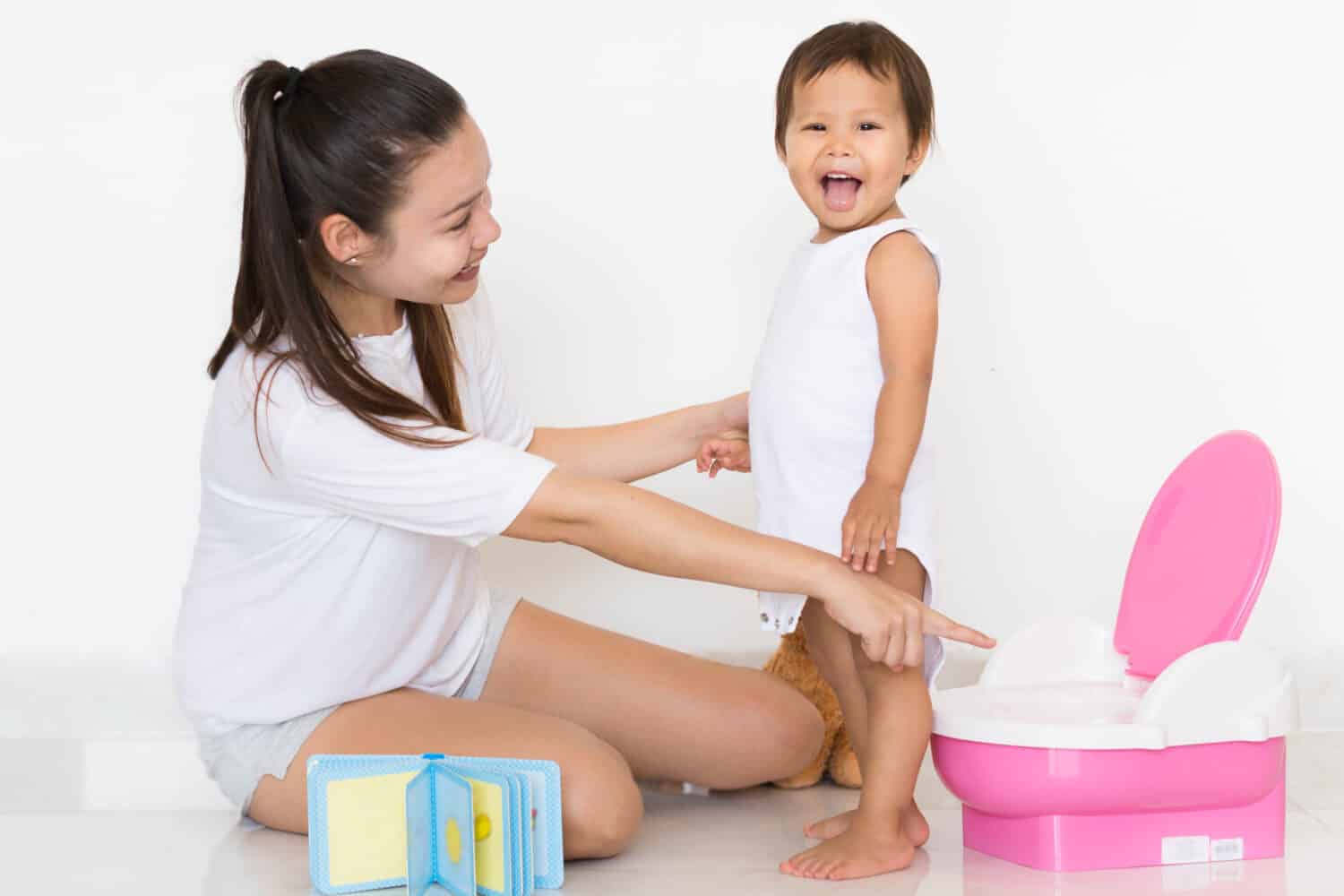
©christinarosepix/Shutterstock.com
You won’t need to guess when the right time to potty train your child is. Oftentimes, your child will give you signals or signs that they are ready to begin potty training. Some signs are more noticeable than others, so be sure to be on the lookout for one or more of these signs below.
- Your child can maintain a dry diaper for longer periods than before. (Think at least two hours for this measurement).
- They begin to pull off their wet or dirty diaper rather than stay in it.
- Your child will begin to wake up dry from naps more often.
- They begin to show an interest in using the toilet or in wearing “real” underwear.
- Your child makes a point to tell you or demonstrates when they need to use the restroom.
- They can easily take down and pull up their pants by themselves.
If you begin to see these signs it can be an indication that your child is ready to begin potty training. Be sure before you potty train that your child can do the following:
- Walk properly, to make it to and from the toilet.
- Be able to identify when they need to use the restroom and alert you to their need.
- Control the muscles needed to sit down on and use the toilet.
How to Potty Train Your Child
Now that you know your child is ready, here comes the hard part. Potty training them. Potty training is not a one-size-fits-all practice and it can take some time to accomplish. With that said, this section aims to arm you with the knowledge and tips necessary to make potty training as simple as possible for you and your child.
Preparing Your Child
An early task that you can do to prepare for this milestone is to go shopping with your child. Pampers suggests that bringing your child with you and allowing them to be a part of selecting their own potty makes them feel more excited about using it. Also, buying your child “big-kid” underwear can make them equally as excited. Try to purchase pairs that have things they love on them, that can make it more exciting and reward-like to put them on.
Preparing The Potty
Be sure to choose an easily accessible spot for the potty. It is best to keep it in the bathroom to help your child make the connection that going potty happens in the bathroom. Another potential location for your child’s potty is in their bedroom so that it is easily accessible to them. After you have the location selected, you need to create a schedule for the potty. You can encourage bathroom use after a meal or a nap. This helps demonstrate to your child that going to the bathroom is a routine thing.
Rewarding The Action
Once you successfully get your child to use the potty it is important to praise them. You can give verbal praise to your child, or things such as a hug or high-five. Additionally, it is a great idea to implement a potty training chart. Using a potty training chart is a great way to track your child’s progress and allows them to feel great about their accomplishments. Make it an interactive chart by allowing them to place a sticker on each category after they successfully accomplish that task. Making it fun and interactive will make it more enjoyable, and will result in your child having a better attitude towards it.
The Do's and Don’ts of Potty Training
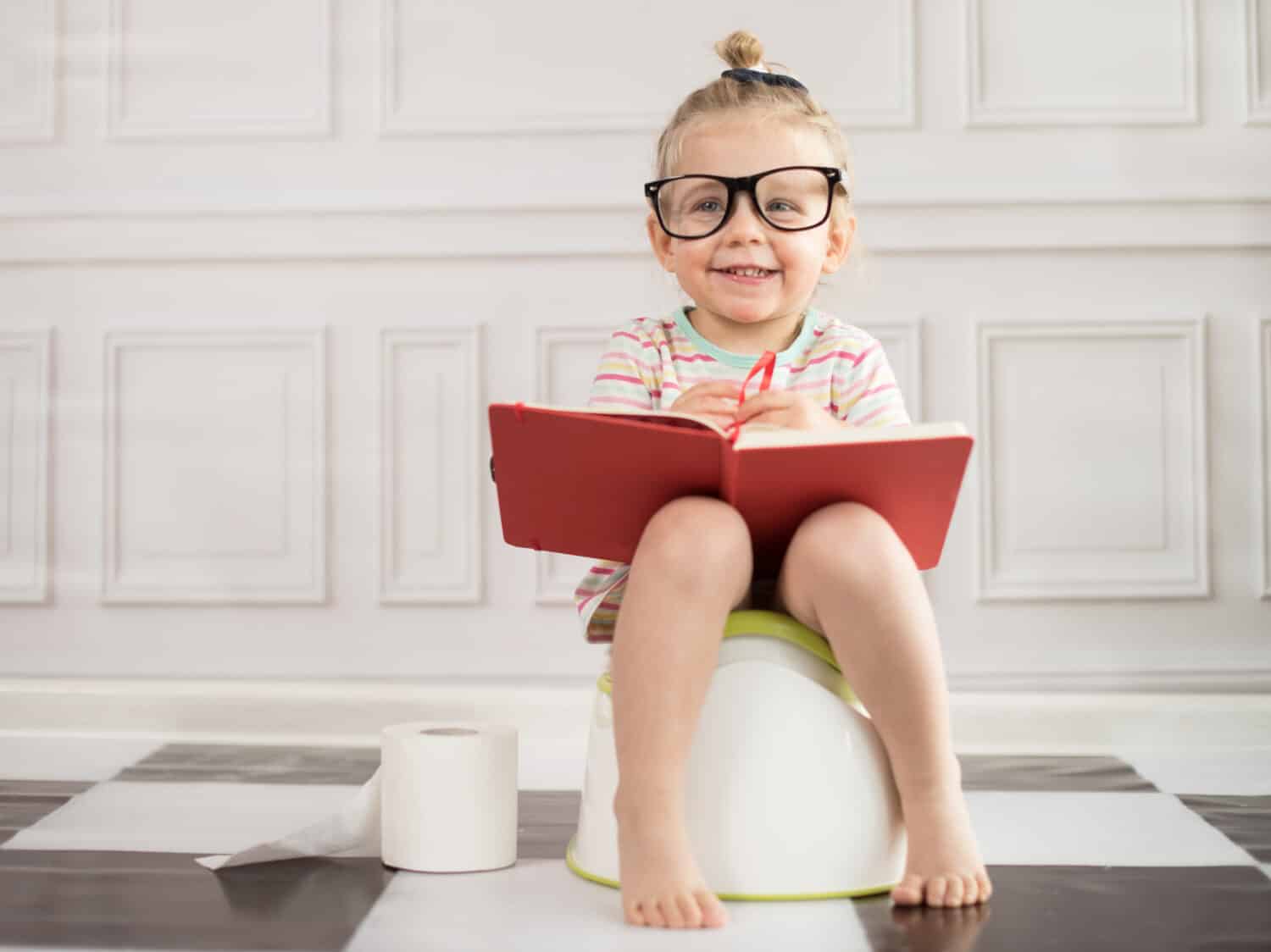
©Bartosz Budrewicz/Shutterstock.com
Below is a quick snapshot of some of the do's and don’ts of potty training. You can use it at a glance when you need a reminder of the process.
| Do's | Don'ts |
|---|---|
| Wait until your child is ready to begin potty training. | Start potty training early because you are trying to match others' pace. |
| Make the process easy and fun. | Make the process feel like a punishment or a chore. |
| Be consistent and give lots of praise. | Make the mistake of not having a schedule and forcing your child to go when they do not need to. |
| Be prepared for regression or setbacks. | Get frustrated with yourself or your child if and when there are setbacks. |
How to Make Potty Training Fun
To make potty training as successful as possible you should do your best to make it enjoyable. There are many methods to making potty training fun. You can use the potty training chart, an interactive way to show your child how much progress they are making or use a potty song or a potty dance that makes a fun celebration out of the routine. You can have a reward system, where if your child goes so many times on the potty they earn a reward. The possibilities are endless! There are even programs like Big Kid Academy to help you along the way!
The image featured at the top of this post is ©Mari.Toch/Shutterstock.com.
